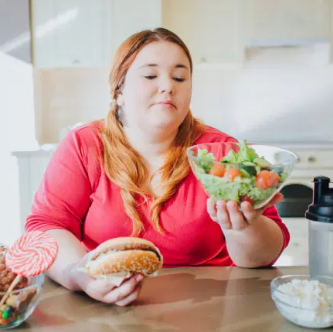Eating clean is more than just a trend—it is a lifestyle that promotes better health, increased energy, and a stronger connection to the foods we consume. At its core, eating clean means choosing whole, minimally processed foods that nourish your body and mind. It is about being mindful of what you eat, understanding where your food comes from, and making choices that support your overall well-being. If you want to make better food choices while enjoying your meals, there are practical strategies you can adopt to create a sustainable and enjoyable approach to clean eating.
One of the most important steps in eating clean is to focus on whole, natural foods. Fruits, vegetables, whole grains, lean proteins, and healthy fats form the foundation of a balanced diet. These foods are rich in essential nutrients, such as vitamins, minerals, and antioxidants, which help your body function at its best. Incorporating a variety of colorful vegetables and fruits into your meals not only enhances flavor and texture but also ensures you receive a broad spectrum of nutrients. Choosing seasonal produce can also maximize freshness and nutritional value.
When it comes to protein, selecting lean sources is key. Chicken, turkey, fish, beans, lentils, and tofu provide high-quality protein without the added saturated fat found in many processed meats. Including a variety of protein sources in your diet supports muscle maintenance, keeps you feeling full longer, and stabilizes your energy levels throughout the day. Pairing protein with complex carbohydrates, such as quinoa, brown rice, or sweet potatoes, creates balanced meals that sustain energy and prevent sudden spikes and drops in blood sugar.
Healthy fats play a crucial role in a clean eating approach. Avocados, nuts, seeds, and olive oil supply essential fatty acids that support heart health, brain function, and overall well-being. Instead of relying on fried or heavily processed foods, choosing these nutrient-dense fats can enhance the flavor of your meals while providing long-term health benefits. It is important to remember that moderation is key, even with healthy fats, as they are calorie-dense and can add up quickly if portions are too large.
A critical part of making better food choices is learning to read labels and identify hidden ingredients in packaged foods. Many processed items contain added sugars, unhealthy fats, and excessive sodium that can hinder your health goals. By reading nutrition labels carefully, you can make more informed decisions and avoid products that may seem healthy at first glance but are less beneficial than they appear. Opting for items with minimal ingredients and recognizable names is often a reliable way to select cleaner options.
Meal planning and preparation are powerful tools for maintaining a clean eating lifestyle. Preparing meals in advance ensures that healthy options are readily available and reduces the temptation to choose less nutritious convenience foods. Planning also helps you manage portion sizes and balance macronutrients across the day. When your kitchen is stocked with wholesome ingredients and your meals are thoughtfully prepared, making nutritious choices becomes much easier.
Hydration is another often-overlooked component of clean eating. Water supports digestion, nutrient absorption, and overall cellular function. Drinking adequate water throughout the day can reduce cravings, improve concentration, and keep your body functioning efficiently. Infusing water with slices of fruits or herbs can add flavor without introducing extra sugars or artificial additives, making hydration more enjoyable.
Mindful eating practices complement clean eating by encouraging awareness of hunger and fullness cues. Taking the time to savor your meals, eating slowly, and paying attention to portion sizes can prevent overeating and enhance your enjoyment of food. Mindful eating also helps you recognize emotional eating patterns and develop a healthier relationship with food. By understanding your body’s signals, you can make choices that support both physical health and emotional well-being.
Another key aspect of making better food choices is reducing the consumption of highly processed and sugary foods. While it is natural to enjoy treats occasionally, frequent consumption of sweets, soft drinks, and packaged snacks can lead to energy crashes, inflammation, and long-term health issues. Gradually replacing these items with whole food alternatives—such as fruit for dessert, nuts for a snack, or sparkling water instead of soda—can make the transition to cleaner eating feel manageable and sustainable.
Cooking at home is one of the most effective ways to control the quality of your meals. When you prepare your food, you can select the freshest ingredients, adjust flavors to your preference, and limit additives that are common in restaurant or takeout meals. Experimenting with herbs, spices, and natural seasonings can make meals more enjoyable while keeping them nutritious. Home cooking also offers an opportunity to explore new foods and recipes, which keeps your eating habits exciting and varied.
Supporting your clean eating journey also involves creating a positive environment. Surrounding yourself with people who respect and encourage healthy choices, keeping your kitchen stocked with wholesome foods, and organizing your meals in a way that promotes balance can make a significant difference. Small changes, such as keeping fruits visible on the counter or prepping vegetables in advance, can nudge you toward better decisions consistently.
It is important to recognize that clean eating is not about perfection or strict rules. Flexibility allows you to enjoy meals with friends and family without guilt while maintaining a foundation of nutritious habits. Building a sustainable approach means understanding your own preferences, energy needs, and lifestyle demands, so that clean eating becomes a natural part of daily life rather than a temporary restriction.
Ultimately, making better food choices is a process that involves awareness, planning, and experimentation. By prioritizing whole foods, staying hydrated, cooking at home, and practicing mindful eating, you create a supportive framework for long-term health. Listening to your body, honoring your preferences, and allowing room for occasional indulgences ensures that clean eating is both effective and enjoyable. Over time, these habits can transform your relationship with food, boost energy levels, improve overall well-being, and foster a sense of empowerment and confidence in your choices.
Eating clean is a journey, not a destination. Each small step toward better food choices builds a foundation for lasting health and vitality. With thoughtful planning, curiosity, and commitment, anyone can adopt a clean eating lifestyle that feels natural, rewarding, and deeply satisfying. By embracing whole foods, staying hydrated, and practicing mindful habits, you can enjoy meals that nourish your body, fuel your energy, and support a vibrant, balanced life. Clean eating is not about restriction—it is about abundance, flavor, and making choices that align with your health goals and personal values.






